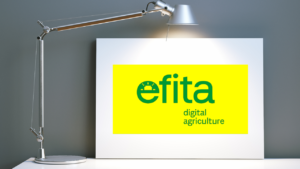Newsletter ![]() Issue #7
Issue #7 ![]() May 2021
May 2021
- Editorial
- The impact of Covid-19 pandemic to the AgI market
- The BEACON Lighthouse Customers
- Project progress
- Upcoming events
- In case you missed
- Join us
Editorial
 We hope you are enjoying springtime and be ready to dive
We hope you are enjoying springtime and be ready to dive
into our seventh BEACON project newsletter!
In this issue, we present the impact the pandemic has had on the AgI market as recorded by a survey conducted from AgroInsurance International. We also proudly introduce you to some more of our Lighthouse Customers. An overview of the project progress is given as well as the most important news you should not miss out on. Finally, make sure to check out our selection of upcoming events.
Follow us and stay informed on the latest project developments!
The Impact of Covid-19 pandemic to the agricultural insurance market
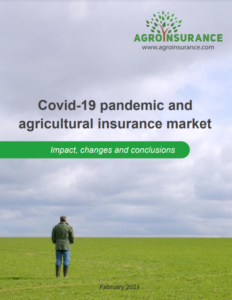 The effects of COVID-19 were investigated on the global agricultural insurance industry by AgroInsurance International in a recent publication. A survey was conducted from July 2020-February 2021 amongst agricultural insurers and reinsurers to examine their experiences of any difficulties during the COVID-19 outbreak in 2020.
The effects of COVID-19 were investigated on the global agricultural insurance industry by AgroInsurance International in a recent publication. A survey was conducted from July 2020-February 2021 amongst agricultural insurers and reinsurers to examine their experiences of any difficulties during the COVID-19 outbreak in 2020.
Participants included 64 respondents from 29 countries representing brokers (5%), primary insurance (62%) and reinsurance (11%) companies, loss adjustment (3%) and underwriting (5%) agencies, and other service providers for the agriculture re/insurance business (14%).
According to the survey results, COVID-19 did not have a significant effect on the business operations of the agricultural insurance market overall. Only 16% of respondents stated that in 2020 their companies experienced some decrease in premium volumes and a reduction in the number of clients. The farmers in most countries did not change their strategies due to the pandemic and continued using insurance as a risk management instrument. Reinsurers faced difficulties in conducting on-site meetings with their clients. Nonetheless, renewals and new treaties were being concluded on time, whilst agricultural reinsurance programs suffered minimal impact. The operational regimes of the insurance businesses worldwide were affected the most common challenges indicated by 71% of respondents being the inability to conduct face-to-face client meetings. Insurance companies managed to make quick modifications to their strategies to communicate with farmers remotely.
32% of respondents had to make some changes to their underwriting practices in 2020. Some insurers implemented mobile applications, to enable farmers to purchase insurance coverage online and some started to use digital signatures more extensively. Policy sales closing and application dates were revised, premium payments and reporting deadlines were extended by most of the insurance program administrators. pre-acceptance and routine crop surveys were performed using new social/physical distancing protocols. Some insurers employed drones for remote crop surveying and a number of insurers contracted satellite data providers to assist them with crop inspections and crop condition assessments.
Loss assessment was moderately affected as 45% of the survey participants responded that some changes to the procedures and protocols were implemented. In order to perform loss assessment, some companies used the photo-based approach, where clients took photos showing the volume and characteristics of the loss gained and sent it further to the insurance company. Drones and satellite imagery were also used.
Additionally, according to the survey responses, the most challenging client relations were small/individual farmers (68%). In general, the most common challenge experienced by the majority of respondents was the planning of on-site visits. It has also been noted that due to local lockdowns and restrictions, some farmers missed an opportunity to update their yield records.
Technologies applied for underwriting and loss assessment during the 2020 pandemic mostly included satellite remote sensing (68%) and weather data sets (68%), followed by digital maps (55%) and GIS software (53%). Some companies accepted and applied photos and videos provided by the insurers during loss assessment (37%), as well as drones (29%). Weather data from automatic weather stations (29%), data from combined yield monitors (29%) and soil moisture data from field sensors (16%) were additionally applied. The insurers estimated that the most necessary technology to be implemented in future to enhance agricultural insurance programs is satellite remote sensing (76%).
Overall, there is strong evidence of a paradigm shift in many countries, with primary insurers focusing on new technologies and implementing changes to key procedures and protocols. However, in many cases, those processes had been long due. The pandemic became an influencing factor, which encouraged insurance companies to focus on new technologies and solutions.
The BEACON Lighthouse Customers
The BEACON Lighthouse Customers (LHC), the group of well-established Agricultural Insurance providers that will be involved in the co-development and co-validation process of the BEACON toolbox. Some of our European LHCs are presented in the following:
AON ![]()
 Aon plc is a multinational British professional services firm that sells a range of financial risk-mitigation products, including insurance, pension administration, and health-insurance plans. Aon offers additionally Data & Analytic Services that enable better decision-making to help its clients reduce volatility and improve performance, as well as Reinsurance Solutions to provide risk transfer, claims advocacy and capital management solutions that help re/insurers reduce volatility and build more resilient businesses, governments, and communities. Aon has approximately 50,000 employees in 120 countries. More
Aon plc is a multinational British professional services firm that sells a range of financial risk-mitigation products, including insurance, pension administration, and health-insurance plans. Aon offers additionally Data & Analytic Services that enable better decision-making to help its clients reduce volatility and improve performance, as well as Reinsurance Solutions to provide risk transfer, claims advocacy and capital management solutions that help re/insurers reduce volatility and build more resilient businesses, governments, and communities. Aon has approximately 50,000 employees in 120 countries. More ![]()
ASUA ![]()
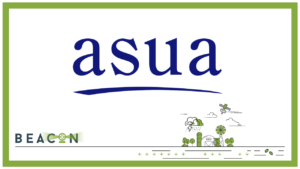 All Seasons Underwriting Agencies (ΑSUA) is a managing general agent (MGA) and acts on behalf of a select panel of insurers to provide intermediaries with a bespoke service to design, price and deliver travel insurance and re-insurance programs. ASUA clients have included brokers, direct retailers, travel agencies and tour operators, trade unions and businesses, sports federations and teams, and even insurance companies who have outsourced their own insurance programs to a trusted specialist. More
All Seasons Underwriting Agencies (ΑSUA) is a managing general agent (MGA) and acts on behalf of a select panel of insurers to provide intermediaries with a bespoke service to design, price and deliver travel insurance and re-insurance programs. ASUA clients have included brokers, direct retailers, travel agencies and tour operators, trade unions and businesses, sports federations and teams, and even insurance companies who have outsourced their own insurance programs to a trusted specialist. More ![]()
B3i ![]()
 B3i Services AG was incorporated in 2018 and is 100% owned by 21 insurance market participants around the world. Altogether, more than 40 companies are involved in B3i as shareholders, customers, and community members. B3i is developing standards, protocols, and network infrastructure to remove friction in risk transfer. Its shareholders and participants believe that new technologies can give end consumers of insurance better and faster access to insurance. It aspires to optimise and automate market-wide processes, generating significant savings in time and cost that cannot be achieved by insurers or intermediaries acting alone. More
B3i Services AG was incorporated in 2018 and is 100% owned by 21 insurance market participants around the world. Altogether, more than 40 companies are involved in B3i as shareholders, customers, and community members. B3i is developing standards, protocols, and network infrastructure to remove friction in risk transfer. Its shareholders and participants believe that new technologies can give end consumers of insurance better and faster access to insurance. It aspires to optimise and automate market-wide processes, generating significant savings in time and cost that cannot be achieved by insurers or intermediaries acting alone. More ![]()
Hellenic Agricultural Insurance Organisation – ELGA ![]()
 The Hellenic Agricultural Insurance Organization (ELGA) is the main insurance carrier of plant production and livestock capital in Greece. It is a State Organization whose main income is the premiums paid by farmers. ELGA implements programs of granting state financial aids to agricultural holdings that have suffered damages from natural disasters, adverse weather conditions and fires, for the restoration of plant and fixed capital, as well as the loss of production, for those not covered by the ELGA. natural hazards, based on approved Regulations. More
The Hellenic Agricultural Insurance Organization (ELGA) is the main insurance carrier of plant production and livestock capital in Greece. It is a State Organization whose main income is the premiums paid by farmers. ELGA implements programs of granting state financial aids to agricultural holdings that have suffered damages from natural disasters, adverse weather conditions and fires, for the restoration of plant and fixed capital, as well as the loss of production, for those not covered by the ELGA. natural hazards, based on approved Regulations. More ![]()
Project progress
The main objective of BEACON is to deliver consumable and actionable insights for the Agricultural Insurance (AgI) industry through a blockchain-fueled toolbox that couples leading Earth Observation (EO) technology with weather intelligence and innovative ICT. BEACON aims at enabling the AgI sector to alleviate the effect of weather uncertainty when estimating the risk of AgI products, reduce the number of on-site visits for claim verification, reduce operational and administrative costs for monitoring of insured indexes and contract handling, and design more accurate and personalized contracts. BEACON has intensively researched and worked on how to use and combine the different technologies and the various data in order to develop a robust and cost-efficient set of services and support the operational use of them during the pilot implementation. The latest achievements in the BEACON project include the following:
![]() The BEACON toolbox
The BEACON toolbox
The BEACON toolbox was further enhanced and specifically, the blockchain was integrated into it enabling the smart contracts’ component to be utilized and tested by the AgI companies. Moreover, several modifications and adaptation were performed in the backend of the toolbox, especially with regards to the services and provide to the end-users a fully integrated and fine-tuned version of the BEACON toolbox, stable enough for the first phase of the pilot implementation.
![]() Development and improvements of the EO services that couple the BEACON toolbox
Development and improvements of the EO services that couple the BEACON toolbox
The appropriate EO methodologies were selected for the detection and qualitative assessment of the damage and then, the algorithms that would quantitatively assess the damage were developed. Based on the results and the feedback received from the end-users and through the mechanism that was set-up for the validation of the Damage Assessment Tool (DAT) during the first implementation phase (pre-pilot), further improvements were performed, especially in the services of hail, drought and floods. Once, the adaptations were made the selected and improved EO methodologies were integrated into the OCTOPUSH and later into the automated workflow of BEACON.
![]() Testing and validation of the BEACON toolbox
Testing and validation of the BEACON toolbox
The first operational integrated BEACON toolbox was tested and validated, in three different cases (Serbia, Spain and Greece). Each of these cases followed the guidelines defined in the pilot deployment plan to ensure the execution of a successful pilot phase and the collection of valuable feedback. However, in order to enhance the accuracy of the initially developed EO products, additional data were required by the AgI companies, end-users of the BEACON toolbox. Therefore, the first pilot phase (pre-pilot) registered parcels in the BEACON toolbox were incorporated in the dataset for developing and testing new more robust approaches for damage detection and assessment.
![]() Alignment of the business cases with the deployment plan
Alignment of the business cases with the deployment plan
Further effort was put on the Growth Hacking Strategy and the business modelling in order to attract as many new AgI companies as possible and engage them into the following pilot implementation phase. The market analysis was updated presenting several new markets and actual market trends and the profile, as well as the approach of the BEACON Business Ambassadors, were introduced.
Upcoming events
![]() IEEE International Conference on Blockchain and Cryptocurrency
IEEE International Conference on Blockchain and Cryptocurrency
![]() May 3-6, 2021
May 3-6, 2021
![]() Virtual Conference
Virtual Conference
![]() Website
Website
The ICBC 2021 Conference is the third installment of the IEEE Communications Society (ComSoc) sponsored conference on Blockchain and Cryptocurrency. It will feature keynotes, tutorials, peer-reviewed technical paper presentations, a hackathon, and exhibitions from world-leading service providers, solution vendors, research institutes, open-source projects, and academia. ICBC 2021 is the primary forum for the technical exchange of the latest research and innovation, regulation, policies, standards, and applications in the exciting and emerging area of blockchain and cryptocurrency.
![]() EFITA 2021
EFITA 2021
![]() May 20-21, 2021
May 20-21, 2021
![]() Digital
Digital
![]() Website
Website
The European Federation for Information Technology in Agriculture, Food and the Environment (EFITA) invites you at the first EFITA International online Conference in 2021. EFITA is an International Conference dedicated to the state-of-the-art and future use of ICT in the agri-food sector and bio-resources production sectors. This event is an opportunity to bring together engineers, scientists, technicians, academics and industry people in a new way to exchange knowledge, ideas, to present innovations and to discuss the state-of-the-art and future use of ICT in the agri-food sector and bio-resources production sectors.
![]() European Research and Innovation Days
European Research and Innovation Days
![]() June 23-24, 2021
June 23-24, 2021
![]() Digital event
Digital event
![]() Website
Website
European Research and Innovation Days is the European Commission’s annual flagship Research and Innovation event, brings together policymakers, researchers, entrepreneurs, and the public to debate and shape the future of research and innovation in Europe and beyond. This year marks the start of Horizon Europe, the most ambitious EU research and innovation programme ever and will be a decisive moment to strengthen the European Research Area. Cooperation in research and innovation is the goal of this event to pave the way to a greener and more digital future.
![]() IGARSS 2021
IGARSS 2021
![]() 12-14 July 2021
12-14 July 2021 ![]() Brussels
Brussels
![]() 12-16 July 2021
12-16 July 2021 ![]() Virtual
Virtual
![]() Website
Website
The IEEE Geoscience and Remote Sensing Society and the IGARSS 2021 Organizing Committee, invite you to the 41st annual IGARSS symposium, the first ever hybrid edition of IGARSS. You can join the event physically in Brussels or virtually via the IGARSS 2021 virtual event platform. The Conference aspires to mark a new start for the international remote sensing community. The overall theme of the conference is Crossing Borders between Countries and Research Institutes, Types of Platforms (from satellites to drones), Data Sources and Disciplines in remote sensing.
![]() BLOCKCHAIN EXPO GLOBAL 2021
BLOCKCHAIN EXPO GLOBAL 2021
![]() September 6-7, 2021
September 6-7, 2021 ![]() London, UK
London, UK
![]() September 13-15, 2021
September 13-15, 2021 ![]() Online
Online
![]() Website
Website
The world leading Blockchain Expo series returns to London at the prestigious Business Design Centre on 6-7th September 2021 and virtually on 13-15 September to host its fifth annual global event. It will bring together key industries from across the globe for two days of top-level content and discussion across 4 co-located events covering Blockchain, IoT, Cyber Security & Cloud, AI and Big data. The Blockchain conference agenda will present a series of expert keynotes, interactive panel discussions and solution-based case studies.
In case you missed
Heat and drought cause crop losses to triple
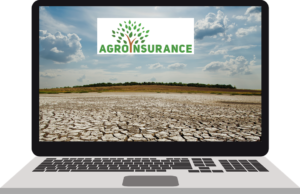 Crop losses caused by heatwaves and drought have tripled in the last 50 years in Europe. Research published recently in the journal Environmental Research Letters looked at agricultural production in 28 European countries from 1961 to 2018. By comparing this data with extreme weather events evidence was found suggesting “climate change is already driving increasing crop losses in observational records.” The severity of heatwave and drought impacts on crop production was observed to have tripled, from losses of 2.2% between 1964 and 1990 to 7.3% from 1991 to 2015. Droughts in particular, were found to be more frequent, are also becoming more and more intense. Read more...
Crop losses caused by heatwaves and drought have tripled in the last 50 years in Europe. Research published recently in the journal Environmental Research Letters looked at agricultural production in 28 European countries from 1961 to 2018. By comparing this data with extreme weather events evidence was found suggesting “climate change is already driving increasing crop losses in observational records.” The severity of heatwave and drought impacts on crop production was observed to have tripled, from losses of 2.2% between 1964 and 1990 to 7.3% from 1991 to 2015. Droughts in particular, were found to be more frequent, are also becoming more and more intense. Read more...
The Weather, Climate & Catastrophe Insight Annual Report
 Climate change is further influencing the behavior of weather events causing extreme phenomena and natural disasters. The humanitarian and financial impact from natural disasters is expected to grow and as a result, more attention is drawn to identifying hazard risk areas. New climate resilience and mitigation strategies are necessary to navigate new forms of volatility, rethink access to capital, and reduce the protection gap as risks are amplified in an increasingly interconnected world. AON has published its Annual Report on Weather, Climate & Catastrophe Insights in which it explores global and regional findings, lessons learnt and the economic losses from natural disasters. Access the report here...
Climate change is further influencing the behavior of weather events causing extreme phenomena and natural disasters. The humanitarian and financial impact from natural disasters is expected to grow and as a result, more attention is drawn to identifying hazard risk areas. New climate resilience and mitigation strategies are necessary to navigate new forms of volatility, rethink access to capital, and reduce the protection gap as risks are amplified in an increasingly interconnected world. AON has published its Annual Report on Weather, Climate & Catastrophe Insights in which it explores global and regional findings, lessons learnt and the economic losses from natural disasters. Access the report here...
The impact of disasters and crises on agriculture and food security
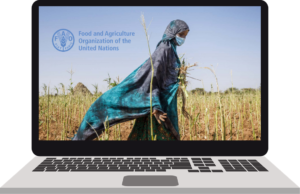 Agriculture underpins the livelihoods of over 2.5 billion people and remains a key driver of development. At no other point in history has agriculture been faced with such an array of familiar and unfamiliar risks, interacting in a hyperconnected world and a precipitously changing landscape. Agriculture continues to absorb a disproportionate share of the damage and loss wrought by disasters. Their growing frequency and intensity, along with the systemic nature of risk, are upending people’s lives, devastating livelihoods, and jeopardizing our entire food system. The 2021 FAO report makes a powerful case for investing in resilience and disaster risk reduction – especially data gathering and analysis for evidence informed action – to ensure agriculture’s crucial role in achieving the future we want. Access the report here...
Agriculture underpins the livelihoods of over 2.5 billion people and remains a key driver of development. At no other point in history has agriculture been faced with such an array of familiar and unfamiliar risks, interacting in a hyperconnected world and a precipitously changing landscape. Agriculture continues to absorb a disproportionate share of the damage and loss wrought by disasters. Their growing frequency and intensity, along with the systemic nature of risk, are upending people’s lives, devastating livelihoods, and jeopardizing our entire food system. The 2021 FAO report makes a powerful case for investing in resilience and disaster risk reduction – especially data gathering and analysis for evidence informed action – to ensure agriculture’s crucial role in achieving the future we want. Access the report here...
Early Warning – Early Action plans on agricultural drought guidelines
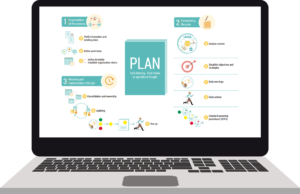 The impact of drought in agriculture is one of the most complex natural hazards to predict and mitigate. According to studies conducted by the Food and Agriculture Organization of the United Nations (FAO), 83% of all damages and losses caused globally by drought between 2006 and 2016 have been absorbed by agriculture, putting a good part of the world population at risk of food insecurity. The guide aims to guide governments and other relevant actors in the development of early warning - early actions on agricultural drought plans that must be implemented before a drought event has significant impacts and causes damages and losses that could eventually become a disaster. Access the guide here...
The impact of drought in agriculture is one of the most complex natural hazards to predict and mitigate. According to studies conducted by the Food and Agriculture Organization of the United Nations (FAO), 83% of all damages and losses caused globally by drought between 2006 and 2016 have been absorbed by agriculture, putting a good part of the world population at risk of food insecurity. The guide aims to guide governments and other relevant actors in the development of early warning - early actions on agricultural drought plans that must be implemented before a drought event has significant impacts and causes damages and losses that could eventually become a disaster. Access the guide here...
Join us
Do you want to stay up to date with all the latest BEACON news?
Do you have any questions or would like to get in touch with us to share your insights, feedback or opinions?
sign up to our mailing list...
follow us on social media...



